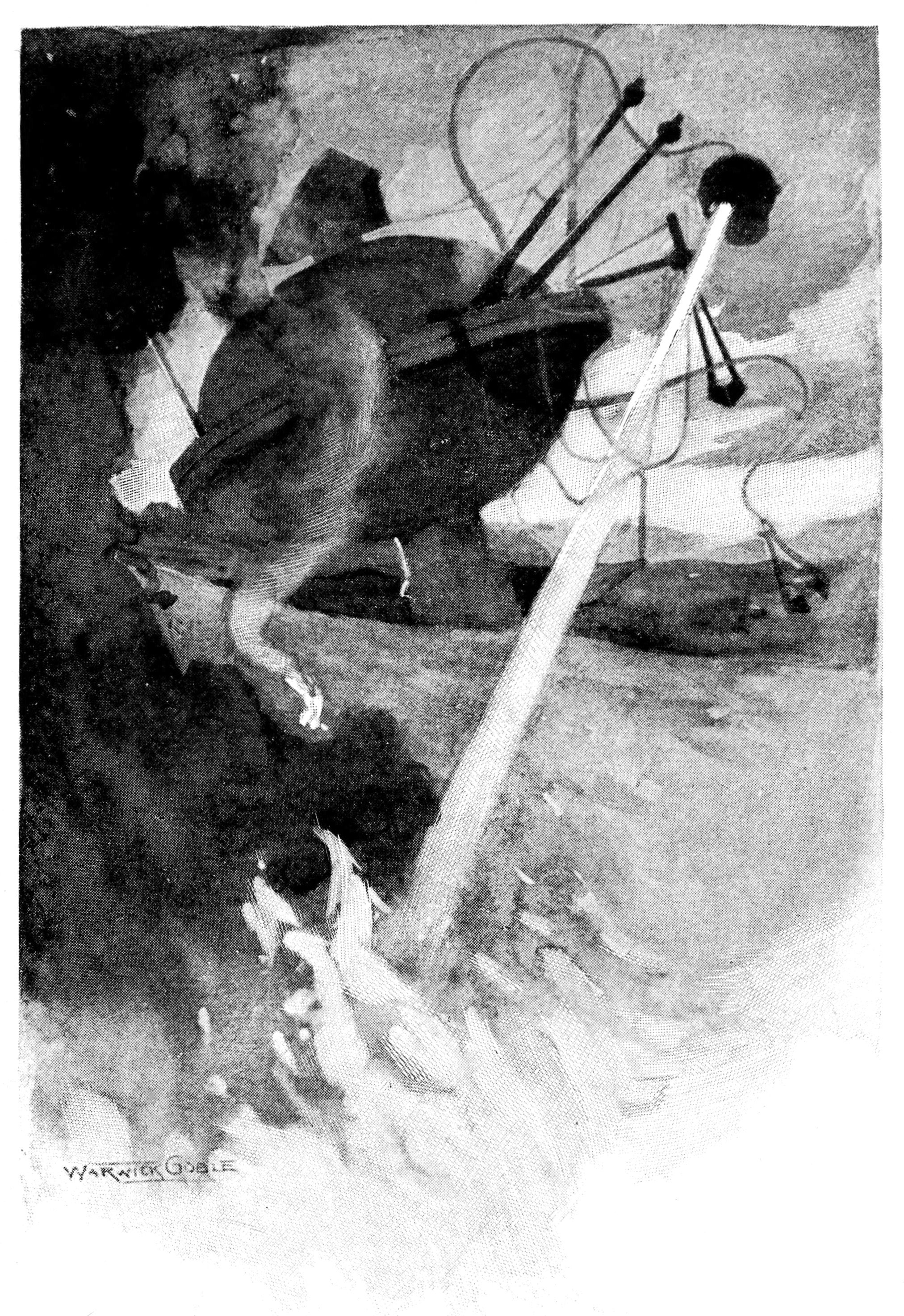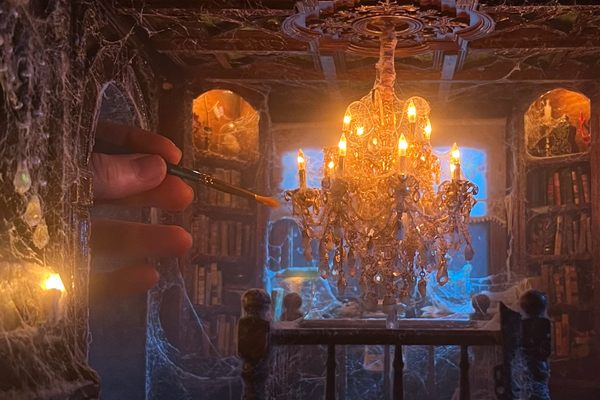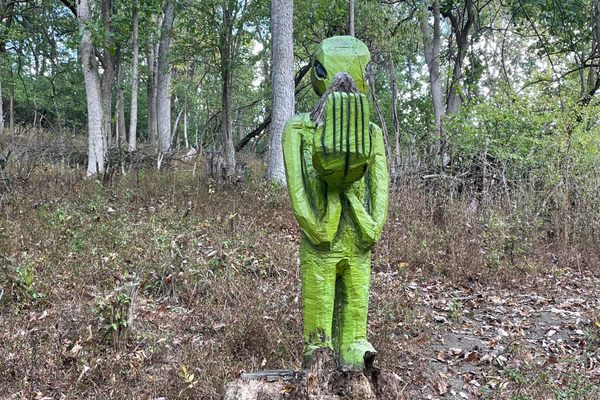H.G. Wells Hid A Sick Burn Inside ‘The War of The Worlds’
Thankfully, the Martians can’t read English.

The image of three-legged Martian attack tripods and rivers covered in strange red weeds, are now iconic symbols of alien invasion, thanks to H.G. Wells’ influential science fiction novel, The War of the Worlds. But when his story was first published, the illustrations were a far cry from the otherworldly imagery described in the text.
So Wells did what any professional artist would do: he went back and added a paragraph talking shit on the artist.
Having been adapted into multiple films, radio plays (Hi, Orson Welles!), and just about every other form of media, The War of the Worlds is probably the most famous alien invasion yarn of all time. In case you are unfamiliar with the story, The War of The Worlds was Wells’ fictionalized account of an attempted Martian takeover of Earth. Arriving in advanced fighting machines that walked around on three, tall, spindly legs, they were outfitted with heat rays and a poisonous black smoke. Earth’s forces were no match for the Martian blitzkrieg, and the planet falls into blasted defeat. In the second half of the book, which takes place after the Martians have seemingly won, the waterways of England are choked with Martian red weed, and all resistance has been crushed. However, as the narrator goes it bit mad and decides to stand up to one of the robotic fighting machines in a suicidal pique, it is discovered that the Martians are all dead or dying in their machines, brought down by the common cold.
The War of the Worlds was initially published as a serial in Pearson’s Magazine in the U.K., and Cosmopolitan in the U.S. throughout 1897. The story, one of the first to detail a war with another planet, was a popular hit during its initial serial run, at least with readers. Wells himself wasn’t so pleased with everything.

A Martian heat ray in action. (Photo: Warwick Goble/Public Domain)
“Wells was unimpressed with the illustrations,” says H.G. Wells expert Michael Sherborne. “He complained about the pictures in a letter to his agent.” Goble, a fledgling artist at the time, who would go on to have a successful career as a children’s illustrator, envisioned the Martian fighting machines as ovular pods that stood on metal beams, which looked like a standard construction support. In some ways they didn’t look very alien at all (see a modern critique of Goble’s art over on Open Culture). And Wells wasn’t having it.
In 1898, the first collected version of The War of the Worlds was released, and Wells had added a handful of new and previously omitted material to the narrative. Included in the additions was an entire paragraph directly commenting on his disappointment with Goble’s illustrations. Found in Book II, Chapter 2, in the middle of dealing with a planet blasted by alien war, the narrator takes some time to give a sort-of bitchy, and suspiciously familiar critique of a war reporter’s illustrations:
I recall particularly the illustration of one of the first pamphlets to give a consecutive account of the war. The artist had evidently made a hasty study of one of the fighting-machines, and there his knowledge ended. He presented them as tilted, stiff tripods, without either flexibility or subtlety, and with an altogether misleading monotony of effect. The pamphlet containing these renderings had a considerable vogue, and I mention them here simply to warn the reader against the impression they may have created. They were no more like the Martians I saw in action than a Dutch doll is like a human being. To my mind, the pamphlet would have been much better without them.

The tripods have arrived. (Photo: Warwick Goble/Public Domain)
Of course this in-world account was simply a not-very-veiled reflection of Wells’ reaction to Goble’s work. In his new book The War of the Worlds: From H.G. Wells to Orson Welles, Jeff Wayne, Steven Spielberg and Beyond, author Peter Beck describes the reasoning behind Wells’ objections to Goble’s artwork, saying, “Apart from being a very visual writer capable of both conjuring up vivid fantastic images for readers and representing his thoughts through picshuas, Wells had strong feelings about the illustrations employed to support his work, as evidenced by his above-mentioned critique of Goble’s illustrations used for the story’s serialization.”
Some versions of the first edition of The War of the Worlds contained Goble’s illustrations, right in the same volume as Wells’ meta-critique, but as the novel fired up the imaginations of countless other science fiction artists, they were replaced by the work of numerous other illustrators in later editions.

A Martian in the flesh. (Photo: Warwick Goble/Public Domain)
In subsequent years, Wells would loosen up his opinion on Goble’s illustrations, coming to see them as just another vision of his creation. Wells eventually authorized the use of Goble’s illustrations in printings of The War of the Worlds, and as noted in Beck’s book, he seems to recant his negative opinion of Gobles’ work, saying in a 1920 interview in Strand Magazine, that the art, “was done very well by Mr. Warwick Goble, during its first magazine publication.”
But the dismissive critique remains in modern editions of the text to this day. Just like his greatest Martians, H.G. Wells’ greatest troll is now a permanent fixture in the sci-fi canon.


























Follow us on Twitter to get the latest on the world's hidden wonders.
Like us on Facebook to get the latest on the world's hidden wonders.
Follow us on Twitter Like us on Facebook